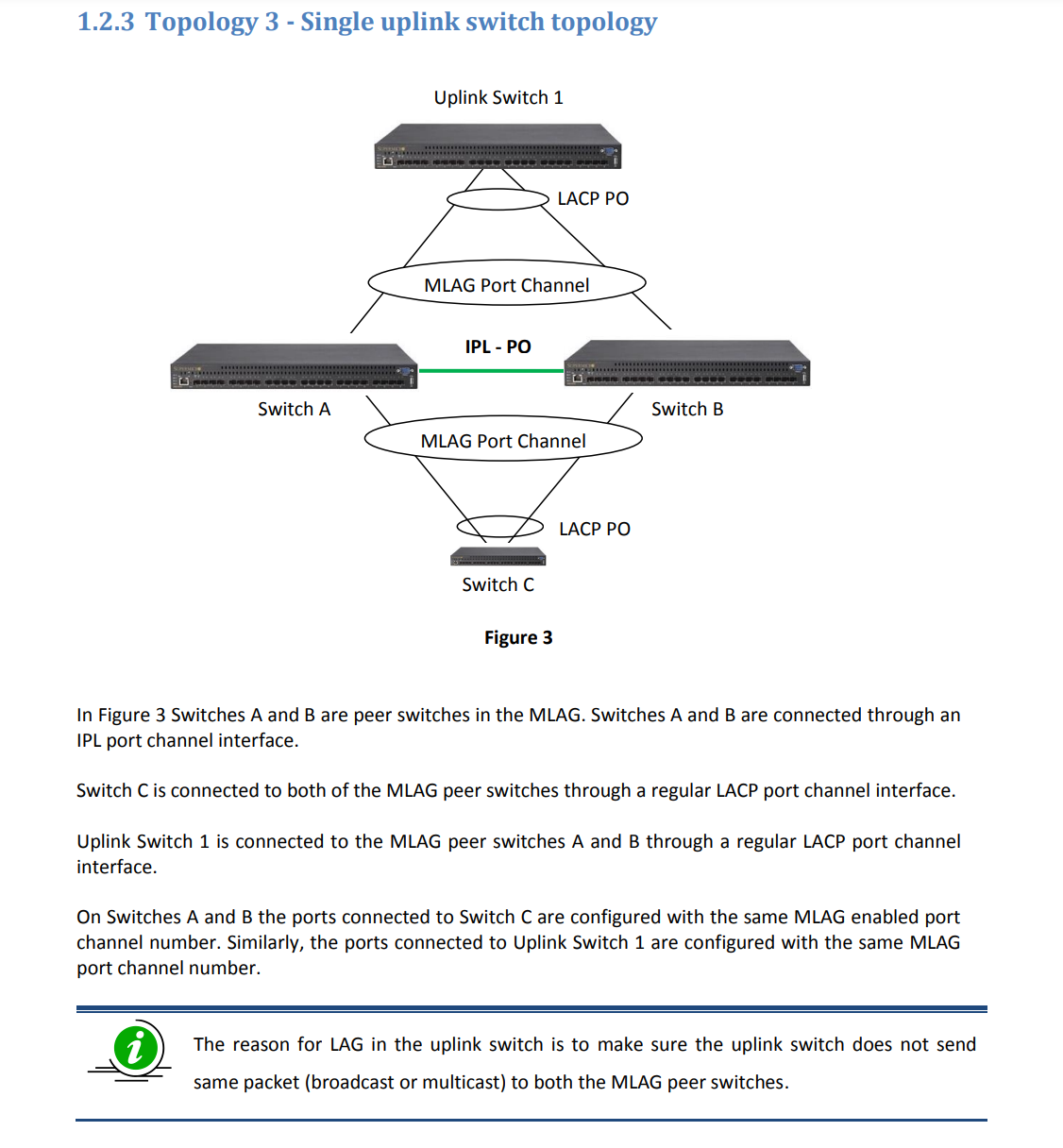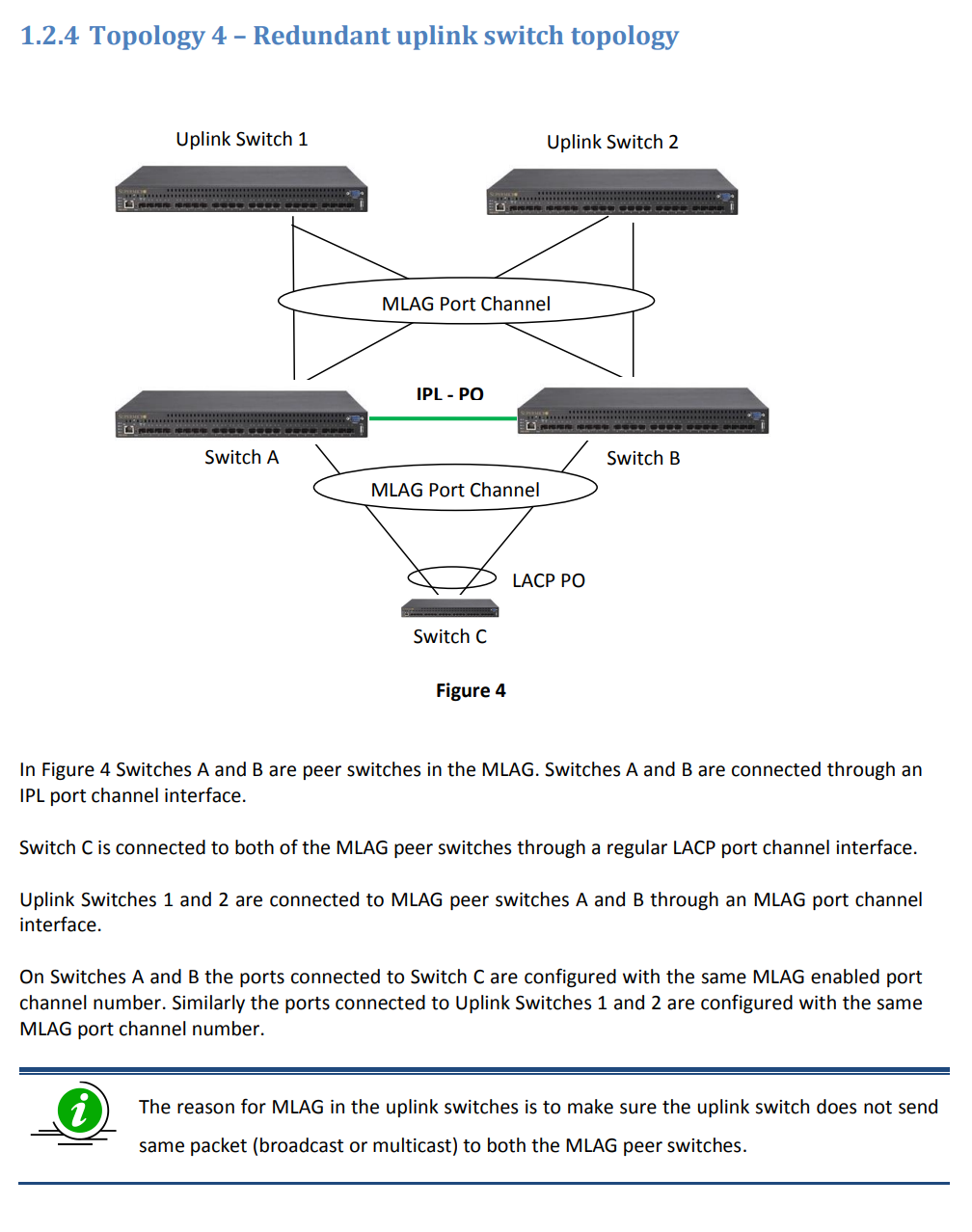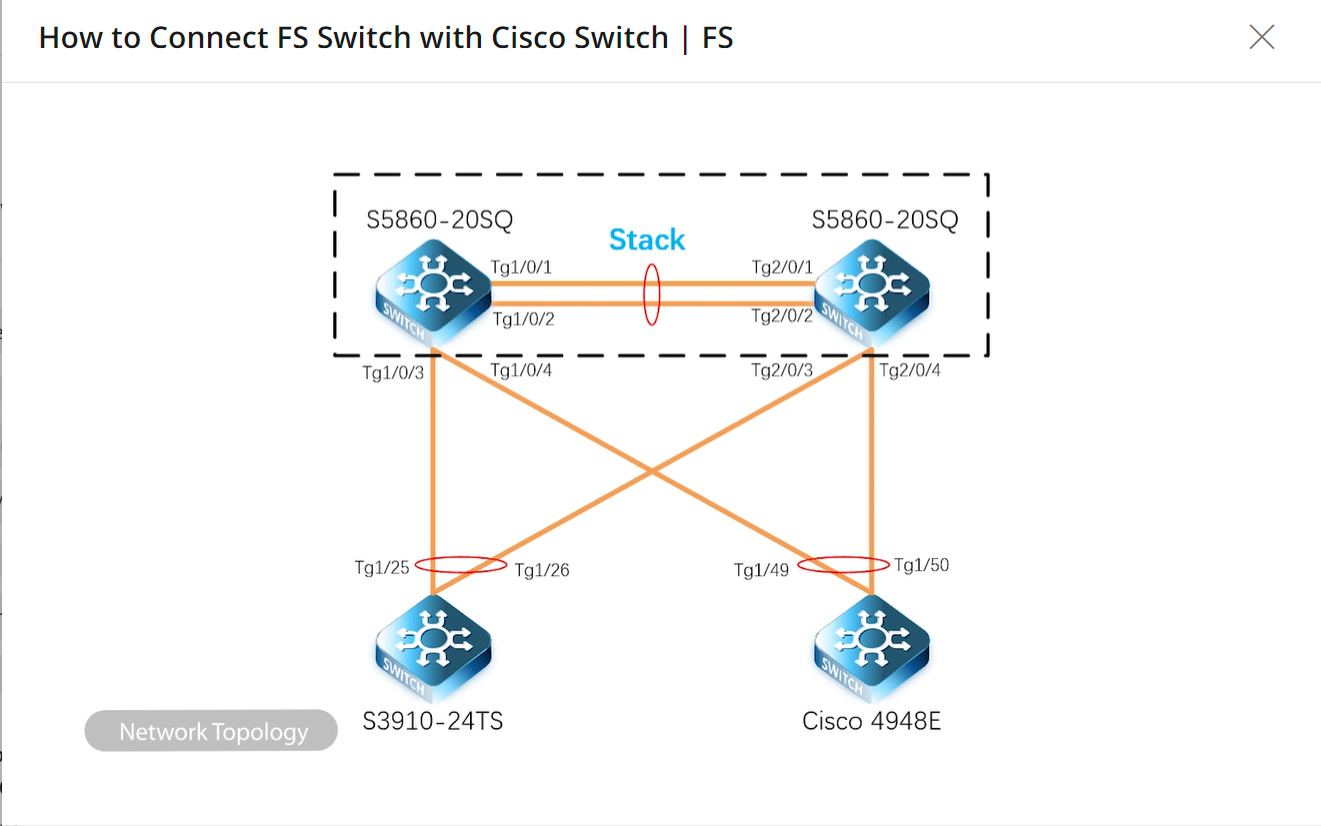LACP and stacking
-
How "hidden" is stacking for other switches?
I have 2 x Supermicro blade switches (for redundancy) that can be configured in a MLAG - and communicate with an uplink switch using standard LACP apparently.
Since I will have two Uplink Switches that supports physical stacking, so that they appear as one unit, will the steps to configure the two blade switches be similar to the picture from the manual? From what I understand, the other switches will not know that there are actually two different switches, it will be logical one unit just bounded in LACP-team.
Note the text saying "Uplink Switch 1 is connected to the MLAG peer switches A and B through a regular LACP port channel interface". To me, this indicate that I do not have to define any MLAG on Uplink switch (it is not a Supermicro switch, so wouldn't work).
In my case, Uplink Switch 1 is physically two switches, but it should appear as one for everyone else and thereby the drawing/steps should be 100% the same.... Or not?
Like Topology 3 shows.
Topology 3:
!

Topology 4 - this is how to do it if I had two Supermicro MLAG switches, which I do not have:

-
@fireix MLAG (also called MCLAG) is completely transparent to uplink devices - including other switches. It is just a LACP uplink.
It is a great way to make switch chassis redundancy that is also link active/active and - potentially - has a very very short failover time.
The “potentially” part is mentioned because it all depends on the MLAG software and interlink implementation in the swiches providing MLAG - so, choose your switch vendor with care :-)It’s a wonderfull way to avoid Spanning tree and gain additional bandwidth from the used links - if the switch vendor has implemented it correctly :-)
-
@keyser In this case, I have no choice of switch vendor because it is a Supermicro BladeChassis with 2xSupermicro BladeSwitches hot-swap trays :) So I would only assume Supermicro makes the communication between their own switches in the chassis good and that they actually follow LACP-standard closely.
So the Uplink switches in this drawing basically doesn't interact with the MLAG at all, it is just the LACP-part of MLAG or the Supermicro blade-switches ? :) If so, it should be possible to make it work with short failover-time. The Uplink switches I have gone for is FS S5860-20SQ at around 1500-1600 USD per switch.
-
@fireix said in LACP and stacking:
So the Uplink switches in this drawing basically doesn't interact with the MLAG at all, it is just the LACP-part of MLAG or the Supermicro blade-switches ? :)
Correct, they only interact with the LACP part and see it as a simple multilink LACP (Active or Passive depending on your config).
-
@fireix they allow for mesh topology without board cast storms ? Layer 3 switches possibly?
-
@JonathanLee One blade chassis switch model is Layer3 and one model is Layer2. Haven't choosen yet. No idea if they support mesh.
-
@fireix no I mean the photo is of a mesh network topology. If one is layer 3 and other others are layer 2 does it use spanning tree protocol for updating the arp tables also? I think some might not support the protocol that the layer 3 switch does.
L3 MLAG
Or L2?Layer 2 switches do not have security that the Layer 3 switch has.
-
@JonathanLee It is mesh when the ports are configured using LACP/MLAG in pair and Stacking?
I'm not sure what layer MLAG operates on, but the MLAG feature is present in both of the different types of Supermicro blade switches.
In the manual for the Uplink switch, I found this drawing that shows interconnect between the two Uplink switches (in stack) with LACP. Doesn't show the MLAG, though, but I assume it would just simplify it with MLAG on the other end.

-
@fireix per Google
“there are ways to separate broadcast domains using switches, including:
Virtual LANs (VLANs): VLANs allow network administrators to divide a physical network into separate logical broadcast domains.
Layer 3 switches: Layer 3 switches can divide broadcast domains.
Broadcast domains can also be separated by routers, which are layer 3 network devices.”That said with what you want hidden that should be placed on the layer 3 switch so you can set the security you want.
-
@JonathanLee Ah, yes, it surely looks more flexible with L3 switch in terms of security and how much you can do on port level. I will not be using normal VLANs in my case since I can't do subnetting-isolation (waste of IP-space and tons of config).
With regards to mesh, in my case, the two Uplink switches will be physically stacked. So the two switches will communicate as one and I would think that it would reduce the chances of broadcast storms. Or maybe not.. One reason for stacking and LACP is to simplify configuration and avoid relying on STP.